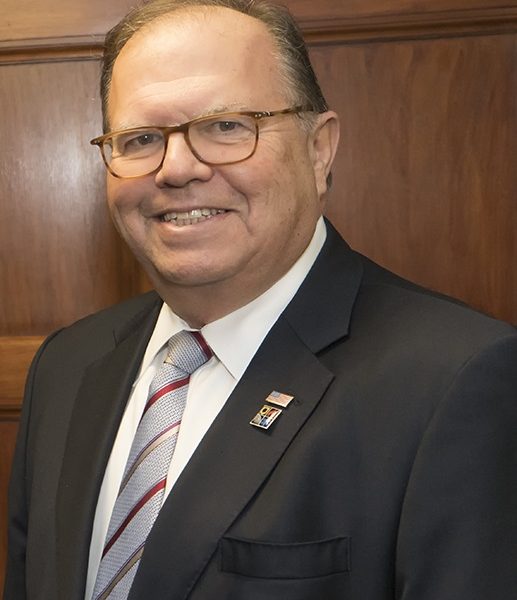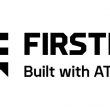New FirstNet Chair Horowitz encouraged by progress, outlines ‘FirstNet 2.0’ plans
Leaders of U.S. public-safety organizations are “thrilled” with AT&T’s development of the FirstNet system and want the FirstNet Authority to continue its advocacy for first responders—a cornerstone of the organization’s “FirstNet 2.0” strategy that will be unveiled next week, according to FirstNet board Chair Ed Horowitz.
Since being named FirstNet board chair in late August, Horowitz said he has met with the leadership of numerous public-safety associations, many of whom have worked for more than a decade in hopes that a nationwide public-safety broadband network (NPSBN) would become reality.
“Overall there’s a real sigh of relief … that it’s actually happening,” Horowitz said during an interview with IWCE’s Urgent Communications. “They are thrilled by the speed with which coverage is occurring.
“They are pleased. They are thrilled that it is happening. They want to make sure that coverage is happening. They also want to make sure that the FirstNet Authority is fully engaged and working on their behalf—which, without question, it is, but they want to hear it again.”
Many public-safety officials’ coverage concerns for FirstNet were based on the fact that Congress allocated only $7 billion for the NPSBN, which most experts estimated would cost $15-60 billion just to deploy, much less maintain and upgrade. In addition, all analysts agreed that it would take several years to deploy the network nationwide, if started from scratch as a “greenfield” project operating solely on the 700 MHz Band 14 spectrum licensed to the FirstNet Authority.
However, FirstNet contractor AT&T decided to give FirstNet subscribers priority and preemption rights across all of its commercial network and spectrum bands, which greatly accelerated the ability to offer wireless broadband services to public safety. This approach also has resulted in more than 60 certified devices already being available to FirstNet subscribers—a development that public-safety representatives have welcomed, Horowitz said.
“They are pleased when they hear that every new Samsung device has got Band 14 in it, that every new Apple device has Band 14, and there’s going to be some computers that are going to come out with Band 14 in them,” he said. “So, they’re satisfied with the device rollout.”
Implementation of the 3GPP standard for mission-critical-push-to-talk (MCPTT) and vertical—or Z-axis—location solutions for public-safety personnel are two of important technologies that are expected on the FirstNet system, but Horowitz acknowledged that both involve significant engineering challenges.
“As it relates to push to talk and the Z-axis, those are technically complicated things to implement, and I’m not going to presume to be able to determine timetables, but I can tell you that is on the roadmap,” Horowitz said. “AT&T is working on it, and our FirstNet teams is working with AT&T on it.”
AT&T recently announced plans to offer fully compliant MCPTT services to FirstNet subscribers from multiple vendors next year. Horowitz said that it could take longer for FirstNet Z-axis indoor-location capabilities to become reality.
“It’s as important to us as it is to the public-safety community, and there’s a lot of activity around it,” Horowitz said. “There’s not a single-point solution—you can’t just have a handheld device and then say, ‘OK, check the box [for a completed project].’ There’s a whole ecosystem that’s got to go around it. That’s where FirstNet and AT&T are engaged, [to determine] what is the ecosystem required to deliver the Z-Axis. It’s not an easy solution, … but it is on the roadmap.”
Horowitz said he is pleased with the progress to date but noted that considerable work remains before the FirstNet system can fulfill the vision that public-safety officials have held for more than a decade.
Continued development of the FirstNet system will depend largely on annual funding that AT&T is contracted to provide FirstNet—more than $18 billion over 25 years. While $2-3 billion is expected to fund operation of the FirstNet Authority during this time, the rest will be reinvested back into the FirstNet system.
Horowitz said that establishing a process for determining how those funds are used is a key task for the new FirstNet board, which includes five new board members.
“This year, we’re going to begin the reinvestment process—what will we use the monies that come in from AT&T to invest in?” Horowitz said. “There’s a very important process that we need to put into place with a lot of transparency. That is what is being worked on now, and that’s my priority.”
Work on these items will begin formally when the FirstNet board meets next Thursday.
“Next week is the first time that the whole board is getting together,” Horowitz said. “In addition to the normal updates from each of the committees, what I’m really focused on is moving out on what I call FirstNet 2.0—the rollout of the network, the advocacy and awareness campaign of FirstNet to the ultimate buyer community, getting devices authorized and cleared, … and delivering on the promise.
“We’ve emerged from pre-operational mode to an operational and rollout mode.”
Horowitz said he is pleased with AT&T efforts to date and that FirstNet is a priority for the giant carrier—as reflected by recent comments from AT&T CEO Randall Stephenson—but he stressed that it is important that the FirstNet Authority continues to advocate for public safety.
“It is very important that the FirstNet Authority retains its role—and, in fact, moves forward on the role,” Horowitz said. “The [public-safety] associations—and the audience, in general—want to know that there is someone who represents public safety in making sure that their needs are articulated and communicated to [AT&T].”
Horowitz said he is encouraged by the the relationship between personnel at AT&T and the FirstNet Authority to date.
“It’s important to us that the organization inside of AT&T that’s been assigned to execute on this contract does so in a manner in which they are supposed to, and they are,” Horowitz said. “Is there something that may come up at some point in the future? We’re all human beings, so I’m sure there will be something that—at some point—needs to get clarified.
“But so far, whenever there’s been any area of ambiguity, people have sat down in a room and figured it out … From a working-relationship perspective, there’s a sold working relationship between FirstNet personnel and AT&T personnel, because we have the same ultimate objective, which is getting public-safety services delivered.”

















